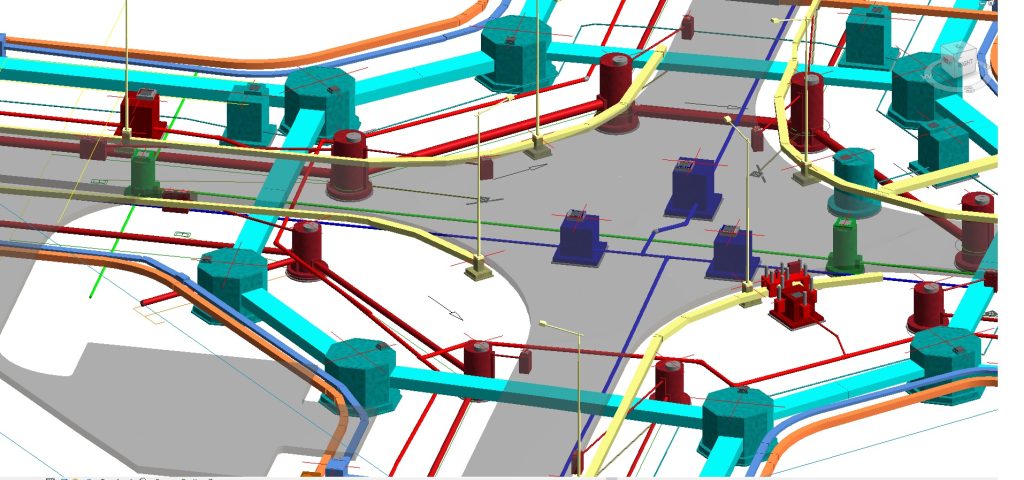In today’s rapidly evolving world, the construction industry stands at the brink of a significant transformation, fueled by technological advancements and innovative approaches. Among these advancements, Building Information Modeling (BIM) has emerged as a game-changer, revolutionizing the way Infrastructure BIM Services projects are designed, constructed, and managed. With its ability to enhance collaboration, streamline workflows, and improve decision-making, BIM services have become indispensable for building smarter and more efficient infrastructure.
Understanding BIM
At its core, BIM is a digital representation of physical and functional characteristics of a facility. Unlike traditional 2D drawings, BIM incorporates three-dimensional, real-time information that encompasses geometry, spatial relationships, geographic information, and quantities of building components. This comprehensive digital model serves as a shared knowledge resource for information about a facility, forming a reliable basis for decision-making throughout its lifecycle.
Streamlining Design and Planning
One of the key benefits of BIM services lies in its ability to streamline the design and planning phases of Infrastructure BIM Services projects. By creating a virtual model of the project, stakeholders can visualize different design options, identify potential clashes or conflicts, and optimize various aspects such as space utilization, structural integrity, and energy efficiency. This iterative design process not only improves the quality of the final design but also helps in reducing costs and mitigating risks associated with rework or design errors.
Enhancing Collaboration and Communication
Effective collaboration among project stakeholders is essential for the successful delivery of infrastructure projects. BIM facilitates this collaboration by providing a centralized platform where architects, engineers, contractors, and other stakeholders can work together in real-time, regardless of their physical location. This seamless exchange of information fosters better communication, coordination, and integration across different disciplines, leading to improved project outcomes and reduced delays.
Optimizing Construction and Operations
During the construction phase, BIM plays a crucial role in optimizing construction sequencing, logistics, and resource allocation. By simulating construction activities within the digital model, contractors can identify potential conflicts, plan work sequences more efficiently, and optimize the use of materials and resources. This not only helps in reducing construction time and costs but also minimizes disruptions and enhances safety on the job site.
Furthermore, BIM services extend beyond the construction phase to support facility management and operations. The digital model serves as a valuable asset for facility managers, providing them with accurate and up-to-date information about the building’s components, systems, and maintenance requirements. By leveraging this information, facility managers can optimize maintenance schedules, predict and prevent failures, and ensure the long-term sustainability and performance of the Infrastructure BIM Services.
Driving Innovation and Sustainability
BIM services are driving innovation and sustainability in the construction industry by enabling the adoption of advanced technologies and practices. Through parametric modeling, generative design, and simulation tools, architects and engineers can explore innovative design solutions that optimize performance, minimize environmental impact, and enhance occupant comfort. Additionally, BIM supports the integration of sustainable materials, energy-efficient systems, and renewable energy sources into the design and construction process, aligning Infrastructure BIM Services projects with broader sustainability goals.
Challenges and Opportunities
While the adoption of BIM services offers significant benefits, it also presents challenges that need to be addressed. These include the need for standardized processes and protocols, the requirement for specialized skills and training, and the investment in technology and infrastructure. However, with the right strategies and partnerships in place, these challenges can be overcome, unlocking the full potential of BIM to transform the infrastructure industry.
Conclusion
Building Information Modeling (BIM) services are revolutionizing the way Infrastructure BIM Services projects are designed, constructed, and managed. By leveraging digital technologies, collaborative workflows, and data-driven insights, BIM enables stakeholders to build smarter, more efficient, and sustainable infrastructure. As we continue to embrace innovation and embrace the opportunities offered by BIM, we are poised to create a built environment that meets the needs of today while safeguarding the interests of future generations.

